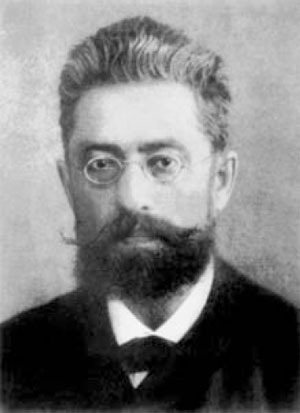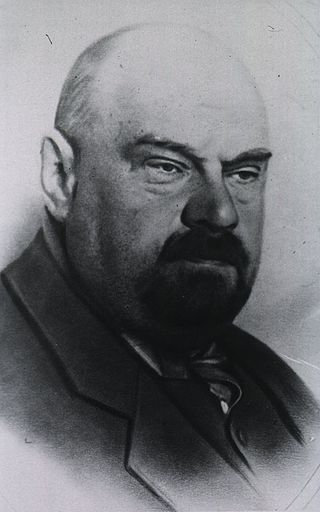A psychiatrist is a physician who specializes in psychiatry. Psychiatrists are physicians and evaluate patients to determine whether their symptoms are the result of a physical illness, a combination of physical and mental ailments or strictly mental issues. Sometimes a psychiatrist works within a multi-disciplinary team, which may comprise clinical psychologists, social workers, occupational therapists, and nursing staff. Psychiatrists have broad training in a biopsychosocial approach to the assessment and management of mental illness.

Hypochondriasis or hypochondria also known as syndrome is a condition in which a person is excessively and unduly worried about having a serious illness. Hypochondria is an old concept whose meaning has repeatedly changed over its lifespan. It has been claimed that this debilitating condition results from an inaccurate perception of the condition of body or mind despite the absence of an actual medical diagnosis. An individual with hypochondriasis is known as a hypochondriac. Hypochondriacs become unduly alarmed about any physical or psychological symptoms they detect, no matter how minor the symptom may be, and are convinced that they have, or are about to be diagnosed with, a serious illness.
A syndrome is a set of medical signs and symptoms which are correlated with each other and often associated with a particular disease or disorder. The word derives from the Greek σύνδρομον, meaning "concurrence". When a syndrome is paired with a definite cause this becomes a disease. In some instances, a syndrome is so closely linked with a pathogenesis or cause that the words syndrome, disease, and disorder end up being used interchangeably for them. This substitution of terminology often confuses the reality and meaning of medical diagnoses. This is especially true of inherited syndromes. About one third of all phenotypes that are listed in OMIM are described as dysmorphic, which usually refers to the facial gestalt. For example, Down syndrome, Wolf–Hirschhorn syndrome, and Andersen–Tawil syndrome are disorders with known pathogeneses, so each is more than just a set of signs and symptoms, despite the syndrome nomenclature. In other instances, a syndrome is not specific to only one disease. For example, toxic shock syndrome can be caused by various toxins; another medical syndrome named as premotor syndrome can be caused by various brain lesions; and premenstrual syndrome is not a disease but simply a set of symptoms.

Somatization disorder was a mental and behavioral disorder characterized by recurring, multiple, and current, clinically significant complaints about somatic symptoms. It was recognized in the DSM-IV-TR classification system, but in the latest version DSM-5, it was combined with undifferentiated somatoform disorder to become somatic symptom disorder, a diagnosis which no longer requires a specific number of somatic symptoms. ICD-10, the latest version of the International Statistical Classification of Diseases and Related Health Problems, still includes somatization syndrome.

Depression is a mental state of low mood and aversion to activity. It affects more than 280 million people of all ages. Depression affects a person's thoughts, behavior, feelings, and sense of well-being. Depressed people often experience loss of motivation or interest in, or reduced pleasure or joy from, experiences that would normally bring them pleasure or joy.

Conversion disorder (CD), or functional neurologic symptom disorder, is a diagnostic category used in some psychiatric classification systems. It is sometimes applied to patients who present with neurological symptoms, such as numbness, blindness, paralysis, or fits, which are not consistent with a well-established organic cause, which cause significant distress, and can be traced back to a psychological trigger. It is thought that these symptoms arise in response to stressful situations affecting a patient's mental health or an ongoing mental health condition such as depression. Conversion disorder was retained in DSM-5, but given the subtitle functional neurological symptom disorder. The new criteria cover the same range of symptoms, but remove the requirements for a psychological stressor to be present and for feigning to be disproved. The ICD-10 classifies conversion disorder as a dissociative disorder, and the ICD-11 as a dissociative disorder with unspecified neurological symptoms. However, the DSM-IV classifies conversion disorder as a somatoform disorder.
Pain disorder is chronic pain experienced by a patient in one or more areas, and is thought to be caused by psychological stress. The pain is often so severe that it disables the patient from proper functioning. Duration may be as short as a few days or as long as many years. The disorder may begin at any age, and occurs more frequently in girls than boys. This disorder often occurs after an accident, during an illness that has caused pain, or after withdrawing from use during drug addiction, which then takes on a 'life' of its own.
Intensive short-term dynamic psychotherapy (ISTDP) is a form of short-term psychotherapy developed through empirical, video-recorded research by Habib Davanloo.
Post-concussion syndrome (PCS), also known as persisting symptoms after concussion, is a set of symptoms that may continue for weeks, months, or years after a concussion. PCS is medically classified as a mild traumatic brain injury (TBI). About 35% of people with concussion experience persistent or prolonged symptoms 3 to 6 months after injury. Prolonged concussion is defined as having concussion symptoms for over four weeks following the first accident in youth and for weeks or months in adults.
Medically unexplained physical symptoms are symptoms for which a treating physician or other healthcare providers have found no medical cause, or whose cause remains contested. In its strictest sense, the term simply means that the cause for the symptoms is unknown or disputed—there is no scientific consensus. Not all medically unexplained symptoms are influenced by identifiable psychological factors. However, in practice, most physicians and authors who use the term consider that the symptoms most likely arise from psychological causes. Typically, the possibility that MUPS are caused by prescription drugs or other drugs is ignored. It is estimated that between 15% and 30% of all primary care consultations are for medically unexplained symptoms. A large Canadian community survey revealed that the most common medically unexplained symptoms are musculoskeletal pain, ear, nose, and throat symptoms, abdominal pain and gastrointestinal symptoms, fatigue, and dizziness. The term MUPS can also be used to refer to syndromes whose etiology remains contested, including fibromyalgia, multiple chemical sensitivity and Gulf War illness.
Somatization is a tendency to experience and communicate psychological distress as bodily and organic symptoms and to seek medical help for them. More commonly expressed, it is the generation of physical symptoms of a psychiatric condition such as anxiety. The term somatization was introduced by Wilhelm Stekel in 1924.

Victor Khrisanfovich Kandinsky was a Russian Empire psychiatrist, and was 2nd cousin to famed artist Wassily Kandinsky. He was born in Siberia into a large family of extremely wealthy businessmen. Victor Kandinsky was one of the famous figures in Russian psychiatry and most notable for his contributions to the understanding of hallucinations.
Oneiroid syndrome (OS) is a condition involving dream-like disturbances of one's consciousness by vivid scenic hallucinations, accompanied by catatonic symptoms (either catatonic stupor or excitement), delusions, or psychopathological experiences of a kaleidoscopic nature. The term is from Ancient Greek "ὄνειρος" (óneiros, meaning "dream") and "εἶδος" (eîdos, meaning "form, likeness"; literally dream-like / oneiric or oniric, sometimes called "nightmare-like"). It is a common complication of catatonic schizophrenia, although it can also be caused by other mental disorders. The dream-like experiences are vivid enough to seem real to the patient. OS is distinguished from delirium by the fact that the imaginative experiences of patients always have an internal projection. This syndrome is hardly mentioned in standard psychiatric textbooks, possibly because it is not listed in DSM.

Pyotr Borisovich Gannushkin was a Russian psychiatrist who developed one of the first theories of psychopathies known today as personality disorders. He was a student of Sergei Korsakoff and Vladimir Serbsky. Not only did he manage to delineate certain organizational tasks of social psychiatry, but he also clearly formulated the main methodological aim of social psychiatrists, to combine methods of individual clinical analysis with sociological research and generalization.
Functional disorders are a group of recognisable medical conditions which are due to changes to the functioning of the systems of the body rather than due to a disease affecting the structure of the body.
Somatic symptom disorder, also known as somatoform disorder, is defined by one or more chronic physical symptoms that coincide with excessive and maladaptive thoughts, emotions, and behaviors connected to those symptoms. The symptoms are not deliberately produced or feigned, and they may or may not coexist with a known medical ailment.
The Patient Health Questionnaire (PHQ) is a multiple-choice self-report inventory that is used as a screening and diagnostic tool for mental health disorders of depression, anxiety, alcohol, eating, and somatoform disorders. It is the self-report version of the Primary Care Evaluation of Mental Disorders (PRIME-MD), a diagnostic tool developed in the mid-1990s by Pfizer Inc. The length of the original assessment limited its feasibility; consequently, a shorter version, consisting of 11 multi-part questions - the Patient Health Questionnaire was developed and validated.
Unitary psychosis (Einheitspsychose) refers to the 19th-century belief prevalent in German psychiatry until the era of Emil Kraepelin that all forms of psychosis were surface variations of a single underlying disease process. According to this model, there were no distinct disease entities in psychiatry but only varieties of a single universal madness and the boundaries between these variants were fluid. The prevalence of the concept in Germany during the mid-19th century can be understood in terms of a general resistance to Cartesian dualism and faculty psychology as expressed in Naturphilosophie and other Romantic doctrines that emphasised the unity of body, mind and spirit.
The Somatic Symptom Scale - 8 (SSS-8) is a brief self-report questionnaire used to assess somatic symptom burden. It measures the perceived burden of common somatic symptoms. These symptoms were originally chosen to reflect common symptoms in primary care but they are relevant for a large number of diseases and mental disorders. The SSS-8 is a brief version of the popular Patient Health Questionnaire - 15 (PHQ-15).
The term functional somatic syndrome (FSS) refers to a group of chronic diagnoses with no identifiable organic cause. This term was coined by Hemanth Samkumar. It encompasses disorders such as fibromyalgia, chronic widespread pain, temporomandibular disorder, irritable bowel syndrome, lower back pain, tension headache, atypical face pain, non-cardiac chest pain, insomnia, palpitation, dyspepsia and dizziness. General overlap exists between this term, somatization and somatoform.





